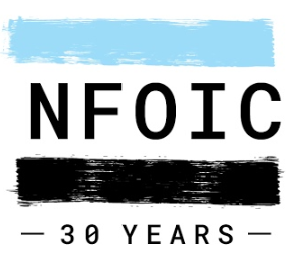Blog Posts
D.C. Private School Voucher Program Lacks Sunshine
dcogcadmin | July 19, 2017
In an unusual 1900-word story beginning on the Metro section front page and continuing almost a full page inside, Washington Post reporters Mandy McLaren and Emma Brown on Saturday (July 15) sketched a little known education program, under a (print) headline “the opacity of school choice” and highlighted in the opening text the gaps in public information about the schools involved:
Congress dedicates $15 million a year to a program that helps low-income D.C. students pay tuition at private schools, but it’s impossible for taxpayers to find out where their money goes: The administrator of the D.C. voucher program refuses to say how many students attend each school or how many public dollars they receive. It’s also not clear how students are performing in each school. When Congress created the program in 2004, it did not require individual private schools to disclose anything about student performance. And private schools can continue receiving voucher dollars no matter how poorly their students fare.
Currently 41 schools enroll scholarship students; families must live in the District and have income below $21,000. Those selected may receive up to $8,452 for elementary and middle school fees and $12,679 for high school.
Such programs touch political hot buttons, as the President and Secretary of Education Betsy DeVos have praised them and proposed increased funding. DeVos said in May, “parents know, or can figure out, what learning environment is best for their children and we must give them the right to choose where that may be.”
According to the Department, “Congress created the Opportunity Scholarship Program (OSP) in 2004 and reauthorized it most recently in 2011 under the Scholarships for Opportunity and Results (SOAR) Act. The SOAR Act establishes criteria for student eligibility, the groups of students who receive priority for scholarships, and dollar amounts of scholarships. Participating private schools must agree to requirements regarding nondiscrimination in admissions, fiscal accountability, and cooperation with an evaluation of the program. The OSP is administered by a program operator through a grant awarded by the U.S. Department of Education.” As a sweetener, which may help explain the D.C. mayor’s support, the program provides funds to D.C. public and charter schools as well.
Earlier reporting noted schools receiving D.C. voucher students didn’t even need accreditation, though that has changed and must be achieved by 2021, but other information remains sparse.
Figures on numbers of students who attend each school and the voucher dollars that accompany them are not released; individual test scores are shown to families. But school data go only to the federal Department of Education. A barebones fact sheet is available on line with a few aggregate numbers, for example that 2,349 new students applied this year and 99 were chosen and that a total of 1,154 scholarship students attend the 41 participating private schools this year. No count of religious schools seems available, but the list of 41 includes quite a few.
The public information gaps (common in private school voucher efforts elsewhere as well, say the authors) don’t dismay the U.S. Education Department. The spokeswoman for Secretary Betsy DeVos told the Post that parents don’t need “more data sets, they need more options.”
Details of school offerings are left to families to check out in person; little is shown in the school directory listings on the program website. The Post warned that limited available information suggests options for parents with children with disabilities or English-language-learning needs may be especially limited.
Kevin Chavous, former D.C. Council member and chair of the board of the program operator, Serving Our Children, appeared in a press comment chiefly to trust parents, telling the reporters “something magic happens when parents feel they have the power to decide where their kids should go to school and they actually shop around.”
The Post editorial board also had no hesitations earlier this year, endorsing the program and criticizing a majority of the D.C. Council that had written Congress requesting it be abolished.
Ignoring the facts in the local legislators’ letter, which emphasized both limited accountability and weak academic results (shown by the federal department’s own review using test results only the federal agency can see), the Post editorial board wrote that despite improvement in public and charter schools, “there are still low-income and minority students — too many of them — trapped in underperforming schools, as the application roster makes clear. Their parents want what every parent wants: good schools that will create opportunity and lead to success. It is not enough to tell them to take a chance on applying to a quality charter or to commute to a school out of boundary or to wait for their neighborhood school to improve.”
Of course parents want the best for their children. If they found the additional resources and enrolled at the pricey schools that are listed as “participating” (including Beauvoir, Sidwell Friends, St. John’s, Field), that would be a terrific step for any family. The reporters contacted schools directly, though, and learned only a handful of voucher recipients attend those schools (for example, Beauvoir none, Sidwell one or two). More are at much smaller places that may even be surviving on voucher income (39 of 45 students at one school, the Post reported) and accordingly may be able to offer much less.
The newspaper report includes warm stories of several successful students who benefited greatly from their voucher experience. Beyond the anecdotes, however, limited information raises concerns about marginal programs in some schools and weak learning gains overall. Despite supporters’ optimism about parental choice, it seems too bad it’s so hard to tell more about what’s going on here.
